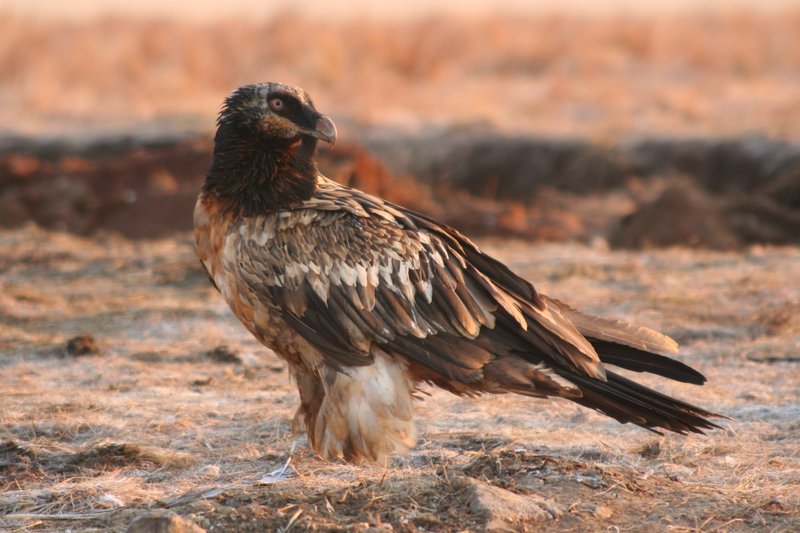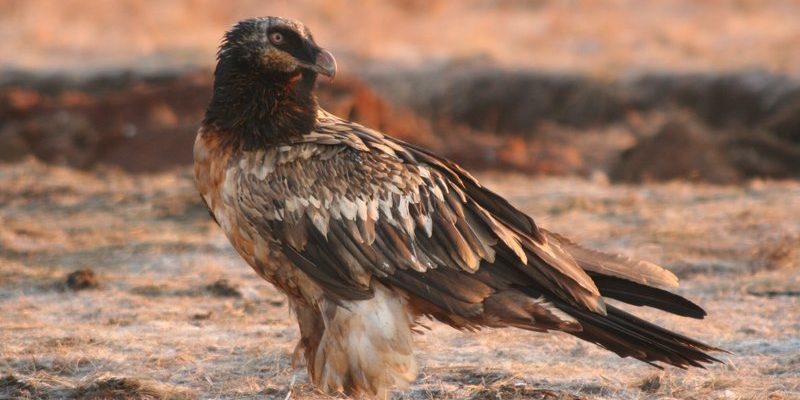
Bearded vultures, known scientifically as *Gypaetus barbatus*, live in mountainous areas of Europe, Africa, and Asia. They’re not just scavengers; they have a diverse diet that mainly includes bones—a bit quirky, but that’s what makes them special. In fact, they are the only birds that can digest bones entirely. But before we get into their diet and how they care for their young, let’s break down their nesting habits.
Choosing the Perfect Nest Site
Bearded vultures are meticulous when it comes to selecting a nesting site. They typically prefer high, inaccessible cliffs—think of steep rock faces that provide safety from ground predators. This location not only keeps their chicks safe but also offers a stunning view! Imagine being a parent with such a breathtaking backdrop.
The nest itself is built using large sticks, bones, and even some feathers. These materials create a sturdy and warm environment for the eggs. Honestly, it’s like a cozy fortress for their future chicks. This strategic choice in location and materials demonstrates how thoughtful these birds are about raising their young.
Once they’ve built their nest, the female usually lays one to two eggs. Here’s the thing: Raising bearded vultures takes a lot of energy, and having fewer chicks allows the parents to provide better care. This shows a fascinating aspect of their behavior—quality over quantity.
Egg Incubation and Hatching
After the eggs are laid, both parents take turns incubating them. The incubation period lasts about 54 to 60 days, during which the adults need to be vigilant. This isn’t just about keeping the eggs warm; they must also protect them from potential threats. Imagine having to stay alert and still find time to eat—that’s what these parents face daily.
During this time, they often rely on each other. You might be wondering how they communicate their needs. Bearded vultures are known for their vocalizations; they’ve got a range of sounds that help them coordinate. One parent might bring food while the other stays on the nest, keeping the eggs safe.
When the chicks finally hatch, it’s a moment of pure excitement. The parents immediately spring into action, bringing food and ensuring their little ones are comfortable and safe. But they won’t leave the nest for too long—after all, every second counts in the world of wildlife parenting.
Feeding the Chicks
Once the chicks are out of their eggs, feeding becomes a top priority. Bearded vultures have a unique feeding strategy. Instead of just dropping food into the nest, they often tear large bones into manageable pieces for their young. This may sound a bit gross, but it’s crucial for the chicks’ development.
Here’s an interesting tidbit: bearded vultures have a penchant for bones because their digestive systems are adapted to extract nutrients from them. When the parents bring bones to the nest, they not only provide nutrition but also teach their young how to handle food. Watching a parent shred a bone is quite the lesson for those little vultures!
As the chicks grow, the parents gradually shift their approach. They introduce the young ones to whole bones, allowing them to practice tearing and handling food. This is not just a meal; it’s a training session that prepares the chicks for their future lives.
Protecting Their Young
Protection is a significant part of raising bearded vulture chicks. The parents are incredibly devoted, often staying close to the nest even when the chicks are old enough to explore. They’re like overprotective parents, always ready to leap into action if they sense danger.
Predators are a constant threat, especially since the chicks are vulnerable during their first few months. The parents’ watchful eyes help to fend off any potential threats. If a predator approaches, you can bet those adult vultures will fiercely defend their young, flying directly at the intruder if necessary.
Additionally, as the chicks grow older and start venturing out of the nest, the parents continue to monitor their whereabouts. It’s akin to watching your kids learn to ride a bike—there’s a mix of pride and nervousness as they explore the world around them.
Learning to Fly
As the young vultures approach fledging age, they start practicing their flying skills. This is a crucial step in their development, and it often begins with flapping their wings while still in the nest. You might picture it as a series of awkward attempts, like a toddler taking their first steps.
The parents play a key role during this phase, encouraging their chicks to take short flights from the nest. It’s an exhilarating time for them! With each attempt, the chicks grow stronger, building both their muscle and confidence as they prepare to take to the skies fully.
Once they finally leave the nest, the fledglings don’t just take off into the vast unknown. Instead, they stick around for a while, often returning to their parents for food and guidance. This phase can last several months, as the young vultures learn the ins and outs of their environment.
Independence and Leaving the Nest
Independence is a bittersweet moment for bearded vulture parents. After months of care, teaching, and protecting their young, the time comes for the chicks to start a life of their own. Slowly, the fledglings begin to venture farther from the nest and rely less on their parents for food.
During this transition, the parents still provide some support. They might continue to share food, but they also encourage their young to hunt and scavenge. It’s a careful balance of letting go while still being there when needed. This parental strategy helps the young vultures become self-sufficient without getting overwhelmed too soon.
Eventually, the fledglings will leave the area entirely, searching for their own territories. This might sound sad, but it’s a natural part of life in the wild. The parents, having successfully raised their young, will now focus on their next breeding season. It’s a continuous cycle of life filled with challenges and triumphs.
Raising young in the wild is no small feat, and bearded vultures demonstrate this beautifully through their unique strategies. From selecting safe nesting spots to the way they protect, feed, and teach their young, every step is carefully crafted for success. It’s a reminder of the complexities of nature and the bond that exists between parents and their offspring.
So, the next time you spot these majestic birds soaring through the sky, remember the incredible parenting journey they undertake. With each chick that successfully fledges, they’re ensuring the survival of their species, continuing a rich legacy in the wild. What a remarkable way to keep nature thriving!

